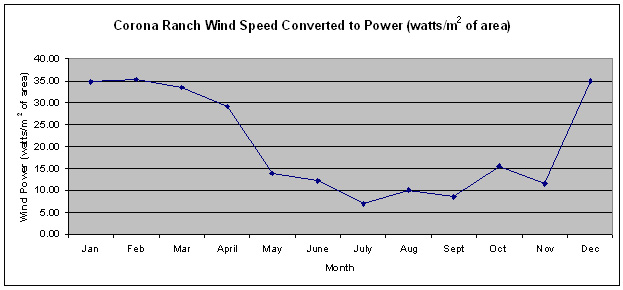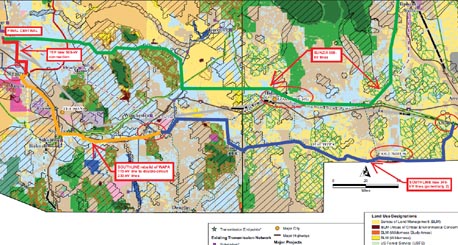CWG's SunZia Project Research, Reports, Letters and Supporting Documents
Note: All reports can be accessed from the button panel to the left. They have been principally written by Norm "Mick" Meader. His webpage can be found here.
- Federal Lobbying Summary
Updated March 2015, Mick Meader. Click here
- Financing and Building SunZia: Is It Possible?
Research from CWG's Mick Meader. For full report, click here
- CWG's Press Release on the BLM's Record of Decision
SunZia to Inflict Great Losses on Arizona's Natural and Cultural Resources
- CWG's Response to the Environmental Impact Statement on the Burial of Lines Across the Northern Extension of White Sands
The impact of the Mitigation Proposal is far reaching compared with the original plan for this area. This argues against a Finding of No New Significant Impact.
- 12/17/14: Letter of Response to the BLM #1
- 12/27/14: Letter of Response to the BLM #2
- The Cost and Time to Bury SunZia's Lines Across the Northern Extension of the White Sands Missile Range
While SunZia has tentatively agreed to bury its lines across five miles of the northern extension of the White Sands Missile Range, this is unrealistic and deceptive. The total approximate cost of burying the lines for five miles would be $388 million compared with US$10 million if the lines are constructed above ground. Burying the lines would increase the time to complete SunZia from 2.5 years to nearly 5 years, what the delay would be if the environmental studies were undertaken to move the lines.
Full report - SunZia's Fatal Flaw: Arizona's Transmission System
As things stand, to transfer power to California, New Mexico power producers will be entirely dependent upon what central Arizona utilities build for Arizona's own use, and that will never be sufficient for New Mexico's needs or built on a schedule that can meet them
Full report - SunZia: An Unnecessary High-Risk Project? (February 2013)
Report link.
A response to the report "Evaluating the SunZia Transmission Line Proposal A Guide for Stakeholders and Decision Makers"
Some highlights:
- The SouthWestern Power Group (SWPG) initially proposed SunZia to expand the markets for its permitted 1,000-megawatt power plant in S.E. Arizona, hoping to make it more economic, and SWPG yet intends to use SunZia for this purpose. The later expansion of SunZia did not diminish this need.
- While New Mexico wind generation might help SunZia succeed, it alone cannot support a project of this scope. For the project to have any chance of success, natural gas generation must play a central role in it. Even combined, both forms of generation may be unable to support the project. This uncertainty makes the project's economic outcome questionable.
- When SunZia was conceived, it was thought that New Mexico's renewable energy might help other states in the Southwest meet their renewable energy goals. However all states targeted for New Mexico's renewable energy projects are now expected to meet and exceed their Renewable Portfolio Standard (RPS) requirements with their own resources, and SunZia is not needed to meet them. This is especially true for California. This makes long-distance transmission of renewables unnecessary, meaning that New Mexico's solar and wind energy is far more likely to stay in New Mexico.
- This analysis indicates that the methodology and economic analysis of the draft Environmental Impact Statement for SunZia is deeply flawed. The justification used in the draft EIS for SunZia is so incomplete that legal challenges may delay or stop the project. This possibility raises further questions about project's viability.
Additional Conclusions of the Report:
- Natural gas generation could easily come to dominate the project's use, as SunZia would parallel the El Paso Natural Gas pipeline in southwestern New Mexico and southeastern Arizona for nearly 200 miles. In the last 11 years 1,045 megawatts of generation have been built along this pipeline and another 1,000 megawatts permitted. Given the enormous future projections for natural gas generation in the Southwest and the ease with which this existing generation can be expanded, the majority of the power eventually carried by SunZia could easily be natural gas generated.
- The completion of the 570-megawatt Luna Energy Facility in Deming, New Mexico in 2006 eliminated any physical congestion on the transmission system in southwestern New Mexico, and SunZia is not now needed to increase power delivery in this region.
- Building SunZia cannot be justified merely because New Mexico has abundant, high-quality renewable resources. All other western states, including Arizona, California, and Nevada, that might use New Mexico's renewable energy have been developing their own capacity too quickly for New Mexico to gain control of the renewable transmission market and ensure sale of the state's power.
- Petitions for Supplemental EIS
This supplement would address the purpose, need, and projected energy uses of the proposed project, as well as the analyses that were based upon the assumption of projected energy uses. Many commenters supplied the BLM with fundamental complementary information on these issues well before the DEIS was written and released, yet the BLM did not incorporate any of this into the DEIS for public review and comment. We strongly protest the BLM's withholding from public review, objective third-party information that contradicts the assumptions underlying much of the analysis in the SunZia DEIS.
CWG's Petition Coalition Petition - Critique of BLM presentation
A BLM Presentation made at the Tohono O'odham Nation Legislative Council presented incorrect, misleading information. It appears the BLM is acting as an advocate for SunZia, and not as a neutral oversight body. Report Link. -
Review of the SunZia Southwest Transmission Project Economic Report (1/3/12)
(How many hypothetical jobs might be created)
Also, a Second Review (1/17/12)In late 2011 the SunZia Southwest Transmission Project released two economic studies entitled "SunZia Southwest Transmission Project Economic Impact Assessment" and "Impacts of Potential Alternative Generation Facilities." The job numbers from these reports that SunZia has provided in press releases and published articles are misleading because job-years of work are reported as jobs. SunZia claims that transmission project will create 6,200 jobs when the maximum number of jobs supported is only 2,459, reached in year 3 of construction. Of these 2,459 jobs, only 780 are actual construction jobs, and only 234 of these will actually go to workers in Arizona and New Mexico. In addition, SunZia claims that the project would create 36,700 renewable energy-related jobs when a more realistic number would be between 13,000 and 14,000. These renewable energy jobs also depend upon a highly unrealistic assessment of how many renewable energy projects would actually be constructed and are questionable in themselves. By Norm "Mick Meader, January 3, 2012. Report Link (file size is 276 k)
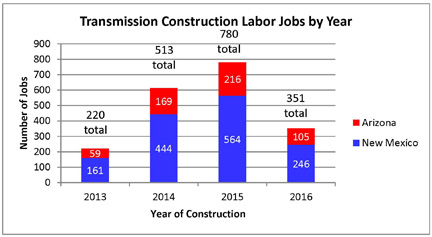
Albuquerque Journal Article on the Economic Impact Report - The Albuquerque Journal printed a glowing, unquestioning article which parroted economic data given to them by SunZia, based on a SunZia-funded study done at the University of Arizona. But after hearing from CWG researcher Mick Meader (who provided his analysis in the report above), the Albuquerque Journal printing this second article. -
Letter Discouraging Washington from Giving SunZia Special Preferences and Loan Guarantees
Click here for the letter and here for the attached reports. -
SWAT Background on the Origin of the SunZia Project and Constraints on the Project's Capacity to Carry Renewable Energy
In 2004 Governor Bill Richarson of New Mexico created a task force to work on the development and export of wind energy from the state, and in response, the Southwest Area Transmission Regional Planning Group (SWAT) proposed a hypothetical route for a 500-kV line to run from central New Mexico to Phoenix via El Paso and Tucson. The Southwestern Power Group (SWPG) noted that this line went very close to its permitted 1,000-MW Bowie, Arizona, power plant, and SWPG then proposed the SunZia Project along this route to serve its Bowie plant. In the end, SWPG did not avail itself of the wind data available for New Mexico and how those data constrain the project physically and economically. By Norm "Mick Meader, July 17, 2011. Report Link (file size is ~400k)
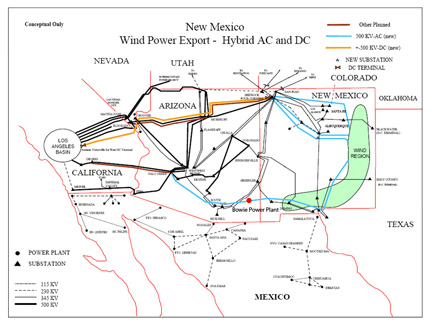
- How Much Renewable Energy Can the SunZia Southwest Transmission Project Actually Carry?
A feasibility study by the High Plains Express Project that included SunZia concluded that it is not economically or physically realistic for a regional-scale transmission project to carry primarily renewable energy. A mixture of renewable and nonrenewable generation is required. Varying mixes of three basic forms of generation must be considered to calculate how much renewable energy SunZia can carry: (1) renewable (wind) generation, (2) nonrenewable dispatchable generation, and (3) nonrenewable base-load generation. This report examines five basic scenarios for mixes of these sources, how much renewable power SunZia would carry for each, and what system utilization would be. If renewable energy dominates the system, system utilization is too low to be economic. Under practical scenarios, it is difficult to achieve a 50% usage of the system by renewable energy. Many hundreds of such hypothetical scenarios, however, using varying capacity factors would have to be calculated to fully characterize the project. By Norm "Mick Meader, July 14, 2011. Report Link.
- Eastern Arizona Interstate Transmission Projects as of June 2011
As of June 2011, six east-west interstate transmission projects are proposed to bring New Mexico renewable energy to Arizona and California: (1) Anova, (2) Centennial West Clean Line, (3) High Plains Express, (4) New Mexico RETA/Goldman Sachs, (5) Southline, and (6) SunZia. All but the Southline Project would bring at least some wind-generated electricity from New Mexico to Arizona and California markets. This report summarizes the basic characteristics of each project and provides maps and schedules for each if available. By Norm "Mick Meader, June 9, 2011. Report Link (file size is 2.7 MB)
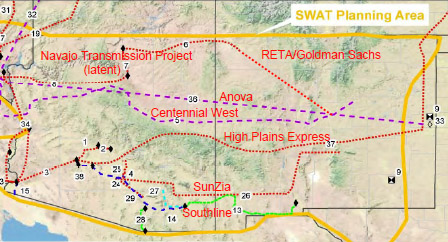
- The Southline Transmission Project - An Alternative to SunZia in Southwestern New Mexico and Southeastern Arizona
The Southline Transmission Project is a proposed southwestern New Mexico-southeastern Arizona transmission project that would connect the Afton generating station northwest of El Paso with the Saguaro generating station north of Tucson, ultimately connecting to Pinal Central and the Palo Verde hub through Tucson Electric Power Company's new 500-kV lines. It essentially parallels the SunZia Project over this distance and would access solar energy resources in predominantly southwestern New Mexico, what SunZia proposes to do. The Southline Project consists of up to two new 345-kV lines in New Mexico and an upgrade of a WAPA 115-kV line in Arizona to a double-circuit 230-kV line. The Southline Project accomplishes what SunZia would in this area with far less environmental impact and is a serious alternative to consider. By Norm "Mick" Meader, February 7, 2011 Report Link
Associated Files:
- Map of the Southline Transmission Project, Southwestern New Mexico and Southeastern Arizona, annotated by Mick Meader, January 30, 2011
- Map of the Southline Transmission Project Through Tucson, annotated by Mick Meader, January 30, 2011
Background Reports
-
The Relationship of the High Plains Express Project to the SunZia Project
Mick Meader, September 19, 2010.
Initially the SunZia Project was considered part of the High Plains Express Project (HPX), which consists of a pair of 500-kV lines that run from central Wyoming to Phoenix. From the wind generation area near Corona, New Mexico, two lines run to Phoenix, one to the north through Springerville, Arizona, and a second through southern Arizona, now the SunZia Project. This report discusses this line and its potential as an alternative to SunZia's southerly route. For comparison, as presented in 2009, SunZia's southerly line would cut ~130 miles of new corridor in Arizona, whereas HPX's northly line would cut none.
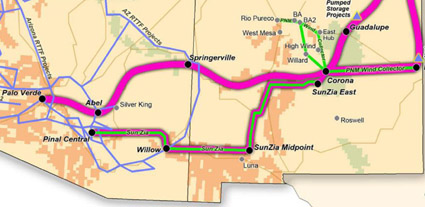
-
The Early History of the SunZia Southwest Transmission Project
Mick Meader, September 2, 2010.
The SunZia Southwest Transmission Project was an outgrowth of the Zia Project, which examined and planned future transmission needs in the western U.S. SunZia was initially conceived in June 2006, and it's configuration was outlined by Mark Etherton of SunZia at a Southwest Area Transmission meeting on October 18, 2006. For nearly the first two years of the project it ran from Phoenix down the San Pedro Valley to the Winchester substation, through the Bowie, Arizona, power plant, and terminated at either the Luna Energy Facility at Deming or the Afton generating station southwest of Las Cruces, New Mexico.
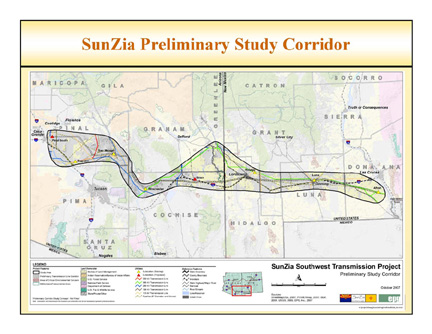
-
The Relationship of the Bowie, Arizona, Power Plant to the Evolution and Scope of the SunZia Southwest Transmission Project
Mick Meader, September 17, 2010.
The SunZia Project was initially designed around the Bowie power plant by the Southwestern Power Group to provide transmission capacity for the plant using a hypothetical route proposed by the Southwest Area Transmission Regional Planning Group (SWAT) to deliver wind energy from central New Mexico to Phoenix. This was the SunZia configuration from fall 2006 to mid-2008. Development of renewable energy was secondary until the project was reconfigured in the spring and early summer of 2008 to attract enough investors to make the project viable.
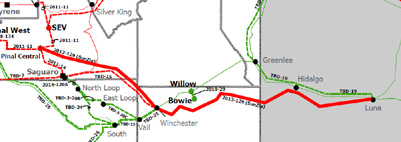
-
Transmission Needs for the Bowie, Arizona, Power Plant
Mick Meader, August 24, 2010.
Although SunZia representatives have denied any need for SunZia transmission lines to carry power from the Bowie power plant, the Tucson Electric Power Company lines that the Bowie plant would connect to are currently at capacity and cannot accept the full power generated by the power plant. New extra-high-voltage transmission lines are required for this, and SunZia is an essential element in providing this capacity.
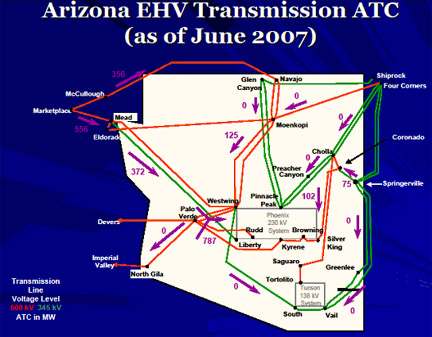
-
Comparison of Peak Wind-Energy Production in Central New Mexico with Peak Electrical Consumption in Arizona and New Mexico
Mick Meader and David Omick, August 18, 2010.
Analysis of average wind speed near the wind-power-generating area near Corona, New Mexico shows that peak energy production occurs in the early part of the year when regional electrical demand is lowest and that the lowest energy production occurs in July and August when electrical demand is highest.
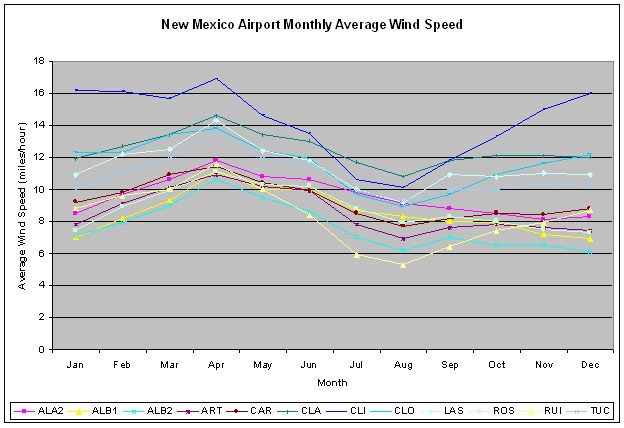
-
Correction to "Comparison of Peak Wind-Energy Production in Central New Mexico with Peak Electrical Consumption in Arizona and New Mexico
," Mick Meader and David Omick, August 25, 2010.
This corrects an error in converting wind speed to power, accentuating the supply-demand variation noted in the above report.
